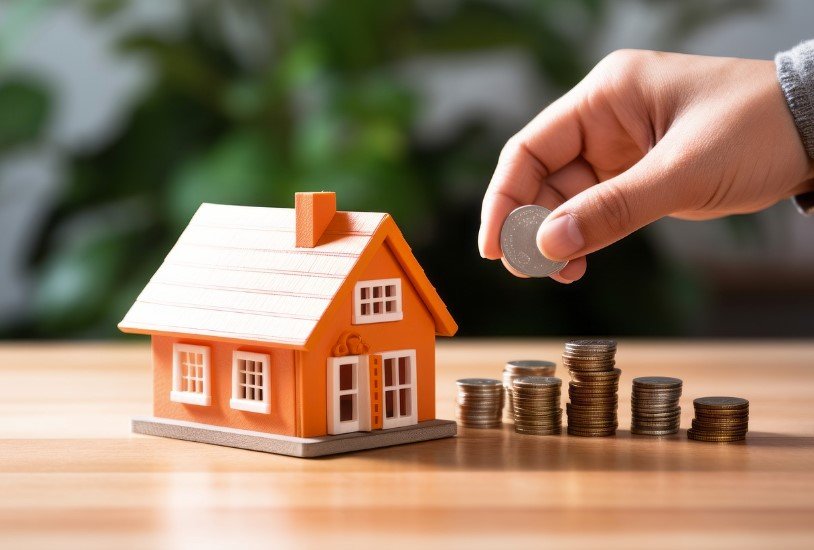Yes, school ratings affect home values! The quality of schools in an area can impact the value of homes. If you want to learn more about how school ratings affect your homes value, read on!
So, does the school district matter? Homes in neighborhoods with top-rated schools generally have higher property values. Homebuyers focus on giving their children access to quality education. This drives the connection.
Here are a few ways in which school ratings can influence the value of homes;
1. Increased Demand. Homes in areas with good schools are in high demand. Buyers often seek out these homes. Families are willing to pay more to live in neighborhoods. Good schools in neighborhoods increase property values.
2. Perception of Quality of Life. Good school ratings are often associated with education and a vibrant community. Buyers see homes in these areas as desirable. This leads to higher property values for schools.
3. Resale Value. Properties located near rated schools generally hold their value over time. Homes that are being sold tend to attract many buyers. This leads to a favorable return on investment for sellers.
4. Stability and Long-Term Growth. Areas that have schools usually provide stability for communities. This stability is attractive to homebuyers with families. These homebuyers are looking for long-term house options. This factor contributes to growth in property values.
Property & School Funding
The relationship between property taxes and educational quality affects property values. This is among the important factors influencing property values. This article will explore the connection between these elements. It will shed light on how they shape the real estate landscape. Additionally, it will explain their impact on homeowners and communities.
Understanding the Connection Between All
The interaction of property taxes and school funding affects property values. Property taxes impact the funding of schools and student education. They affect the resources available for educational opportunities.
Homeowners and potential buyers must understand the connection between education and property values. This understanding is crucial when navigating the real estate market. Funded schools play a role in enhancing property values within a community. The quality of education affects how desirable a neighborhood is! That attracts homebuyers who want a good environment for their families. Communities that fund schools often create higher demand for housing. Higher demand for housing due to funded schools leads to increased property values. Buyers invest in areas that promise education standards for children.
Funded schools increase property values. Yet, high property taxes have drawbacks. So, what decreases property value? Homeowners with fixed incomes or limited financial resources face affordability concerns. In this section, we will examine the advantages of funded schools. We will also discuss the difficulties caused by high property taxes.
Navigating these challenges requires analysis and tradeoffs. Homeowners and policymakers have the challenge of finding solutions. The solutions should ensure school funding without burdening property owners with taxes. Fostering communities requires a crucial balance: education and affordability must coexist.
Neighborhood Appeal
School districts shape the desirability of neighborhood life when explored. Schools' reputation and academic excellence do not reflect their commitment to education. They also contribute to a neighborhood's allure. Areas with excellent schools often have beautiful parks and active communities. These qualities go beyond boundaries. Changes in property values affect neighboring regions.
A school district in one area causes property values to surge. The surge spreads to nearby neighborhoods. Families focus on accessing educational opportunities. This trend influences patterns and population shifts. It also influences the evolution of communities. Consider the atmosphere created by schools attracting engaged families. It is these dynamics that drive the pulse of a sought-after community.
A Positive Economic Impact Home Has on Local Businesses
School districts can have positive effects on local businesses and communities alike. An excellent school district often attracts families seeking quality education. This leads to increased demand for services.
The increased demand triggers a chain reaction. Local businesses grow as they meet population needs. Tutoring centers, bookstores, and recreational facilities thrive near schools. These areas also include stationery shops. The relationship between schools and increased demand for services is beneficial. This contributes to the economic health of the community. Homeowners in these areas benefit in the long term. Neighborhoods with strong school districts become more desirable, causing property values to rise. Increasing property values benefit homeowners. Living near schools solidifies the advantages.
Challenges and Controversies
School districts face challenges that can impact education quality and effectiveness. Disparities in school funding and resources present a challenge. That’s why many parents search for homes by schools. Unequal funding can cause differences in the number of teachers per student. It can also affect the availability of activities and the access to coursework. Such disparities may perpetuate inequalities based on location or socioeconomic background. It’s effective to be teaching and learning about such topics.
Controversies surrounding school district boundaries also pose challenges. Boundary line changes may cause disputes. These debates involve resource allocation, demographic representation, and property value impacts.
Defining, writing, and adjusting district boundaries can cause disagreements. These disagreements can lead to differences in opportunities for students. Lawmakers' efforts to address disparities and improve equality encounter challenges. Developing policies involves considering diverse needs, competing interests, and limited resources. Implementing policies also requires consideration of these diverse factors. Legislative initiatives must navigate the complexities of the education system. Actions taken to enhance equality must be meaningful and sustainable. Coordination between state and local levels is crucial. It brings about changes that impact all students. It fosters a fair educational system.
Today, we've got a real estate market influenced by school districts! Check out some tips for home buyers and sellers that are important. It's essential to approach the process.
Some advice for homebuyers:
Conduct research on school ratings. Use resources and school rating systems. Check the performance and reputation of schools in your potential area.
Visit local schools to experience the learning environment firsthand. Interact with teachers or administrators during your visits.
Consider the future growth of the school district. Assess the long-term prospects by taking into account potential developments or changes. These may impact the quality.
For Sellers:
1. Highlight the excellence of education. Promote the quality and proximity of schools in marketing materials. Showcase any accomplishments, awards or unique programs that make these schools stand out.
2. Collaborate with School Events. Build connections with schools by supporting their events or initiatives. This does not benefit the community. Also enhances the desirability of the neighborhood.
3. Provide buyers with comprehensive information about the local school district. This information should include academic achievements, extracurricular offerings, and recent improvements or investments.
For investors:
1. Analyze historical data. Study trends in property values. This will help identify profitable investment opportunities about school district performance over years.
2. Stay informed. Stay up to date with any proposed changes or developments in the education sector. The changes could impact property values. This includes school constructions and adjustments to district boundaries.
3. Consider diversifying your investments across areas with established and emerging school districts. This will help maximize returns.
Individuals looking to buy homes can make informed decisions of the available environment. They should follow these suggestions for their families. Sellers can use schools to boost property values. Investors enjoy school districts' impact on real estate.
Future Implications
Education is evolving. Emerging trends and policy shifts may reshape school districts and property values.
Emerging Trends in Education
Finding a reliable essay helper can make all the difference in your academic journey. Whether you're struggling with writer's block or need assistance with research, an AI essay helper provides the support and expertise needed to craft a compelling and well-structured paper. By choosing a professional AI essay helper, you can ensure that your work is polished, thoroughly researched, and tailored to meet your specific requirements, giving you peace of mind and more time to focus on other important tasks.
Anticipated Changes in Government Policies
Reforming School Funding. Ongoing efforts to address funding disparities may lead to changes in government policies. These changes have the potential to influence property values. The goal is to ensure equal educational opportunities across all districts.
Adjusting District Boundaries. Government initiatives have the potential to affect property values. This is because families may need to adapt to changes in school accessibility. These initiatives aim to optimize district boundaries for balance and resource allocation.
Predictions for the Future
The global economy values knowledge-based industries, making education more important. This affects property values for school districts. Urbanization trends can impact housing demand in areas with good schools. This can lead to higher property prices.
Stakeholders in estate, education, and government policy must remain attentive. They must also remain adaptable to navigate these trends. Homebuyers, sellers, and investors should track emerging patterns and policy changes. This will assist them in making informed decisions. The decisions will align with the changing dynamics of school districts. It is important to consider their impact on property values.
Final words
The relationship between school districts and property values has opportunities. You can also explore challenges. They fill the tapestry. The quality of school districts affects neighborhood desirability and economics. Our key findings highlight this relationship. Performing schools boost property values and stimulate local economies. This creates a beneficial connection between education and real estate.
Homeowners, buyers, and investors should consider the landscape when making decisions. The real estate market emphasizes this need.
Individuals can make decisions based on knowledge about school district quality. These decisions can align with their priorities. They can find a good environment for their families. They can choose neighborhoods with appealing local schools. They can also invest in growing areas.
Looking forward, school districts and property values will stay connected. It is important for ongoing research and community involvement to ensure progress. We should support policies that increase education access. These policies should also promote economic prosperity and sustainable development. Staying informed and engaging in discussions can help create thriving communities. Education and real estate can come together for everyone’s benefit.












